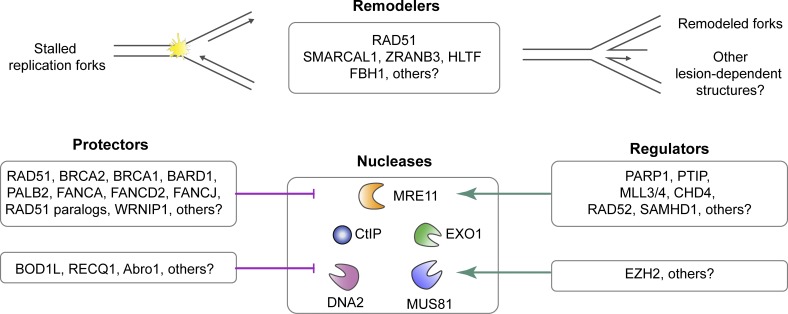Figure 2.
Summary of proteins and their roles in processing or protecting stalled replication forks. Recent observations suggest that many proteins promote the remodeling of DNA at stalled replication forks into reversed replication fork structures. The remodeled fork requires protection by BRCA1, BRCA2, RAD51, and several other factors that have been identified. In the absence of replication fork protection, the newly synthesized DNA is subject to degradation by nucleases. A number of proteins have also been identified as promoting the localization of these nucleases at the stalled fork. Further investigation is required to determine how these fork remodelers, nuclease regulators, and fork protectors may be operating to promote replication fork stability. It is possible that the various remodelers, protectors, regulators, and nucleases are operating in a coordinated fashion; however, it is also possible that their roles are DNA lesion and replication fork structure dependent.

